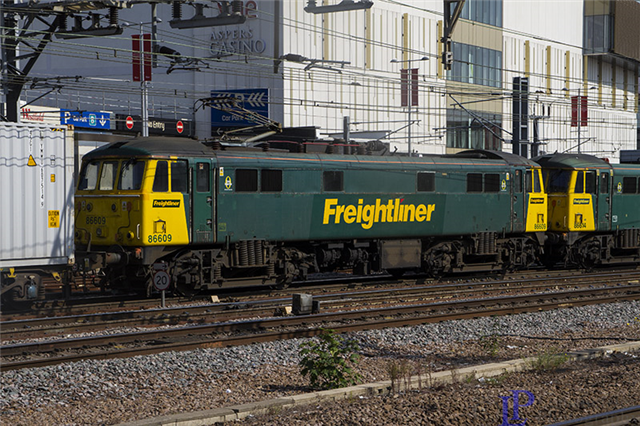The British Rail Class 86 is the standard electric locomotive built during the 1960s. One hundred of these locomotives were built from 1965 to 1966, either by English Electric at Vulcan Foundry, Newton-le-Willows or British Rail (BR) at their Doncaster works. The class was built to haul trains on the then newly electrified West Coast Main Line (WCML) from London Euston to Birmingham, Crewe, Liverpool, Manchester and later Glasgow and Preston.
Introduction of the class enabled the replacement of many steam locomotives, which were finally withdrawn by British Rail in 1968. Under the earlier BR classification system, the type was given the designation AL6 (meaning the sixth design of AC locomotive) and locomotives were numbered E3101-E3200. In 1968, this was changed to Class 86 when British Rail introduced the TOPS classification system.
The class was built to haul passenger and freight trains alike on the West Coast Main Line, however some members of the class also saw use on the Great Eastern Main Line (GEML) between London Liverpool Street and Norwich, after that line was also electrified in the mid-1980s. The type has had a generally long and successful career, with some members of the class seeing main line service lives in the UK of up to 55 years. Most regular passenger duties of the class came to end on both the WCML and the GEML in the early-to-mid-2000s, after a career of up to 40 years. Some members of the class remained in use for charter work and for freight work with Freightliner until 2021. A number of the class were exported to Bulgaria and Hungary and remain in use. As of 2022 three Class 86s remain preserved in usable condition in the UK, all in private ownership.
